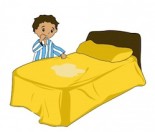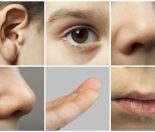When ultrasound was first turned toward the wombs of pregnant women it revealed that babies suck their thumbs even before they are born.
Not too many parents have an issue with this. Thumb-sucking becomes a concern to many parents once the thumb-sucking baby shows no intention of ceasing to suck. Behaviour that may seem adorable in one so young, can be a concern in an older child. The thumb-sucking baby can become a thumb-sucking toddler, and even a thumb-sucking school child.
Why suck your thumb?
Babies are hard-wired to need and enjoy sucking as a separate experience from feeding. It is simple, comforting behaviour and helps some children to fall asleep.
In some babies, the need to suck is more pronounced than in others.
Children at any age tend to exhibit the sucking behaviour most when they are tired, bored, or in need of comfort. Generally, children who suck their thumb are able to fall asleep more easily; are able to put themselves back to sleep at night more easily; and are able to sleep through the night much earlier than infants who do not suck their thumbs. But, it can cause some problems
What problems can it cause?
The most common problem caused by thumb-sucking is a poor bite in the form of:
- Buck teeth: Prominent upper front teeth
- Open bite: The teeth do not meet together at the front
- Cross bite: The lower side teeth bite outside the upper teeth
- Tipping back or crowding of the lower front teeth.
However, not all sucking habits cause the teeth to move noticeably.
If sucking does result in changes in bite, this may also affect the way a child chews, swallows and talks – a lisp may even develop. Apart from dental effects, a thumbsucker child may become withdrawn while sucking their thumb. This “zoning-out” can be problematic if it interferes with learning and participating in activities.
How old is too old for thumb-sucking?
Opinions on this differ.
Any effects thumb sucking might have on the baby “milk” teeth are unlikely to be long term. The aim is to give up the sucking habit before the permanent teeth come through. Some paediatric and orthodontic professionals equate that stage to eight years of age; others say prior to reaching school age.
Most children simply grow out of the habit. While statistics indicate that 45 per cent of two or three year olds suck their thumbs; only five percent of 11 year olds do. The vast majority of children will have finished thumb-sucking by school age.
Many older thumb-suckers stop the habit when they realise it’s not “socially correct” – basically, they are old enough to be embarrassed about it.
How do you break the thumb-sucking habit?
Any attempts to stop thumb-sucking should be tactful, constructive and involve encouragement and praise where applicable.
- Always use a positive approach and choose a time when daily life is settled as your child may use thumb-sucking as a means to relieve stress.
- If your child sucks while asleep, you should attempt to gently remove the thumb from the mouth. (A thumb that lightly rests in the mouth throughout the night may have more detrimental effect than one which is sucked on vigorously but for short periods of time.)
- Some parents opt to apply bitter tasting nail applications, for example, to act as reminders not to suck. A band-aid on the thumb or a mitten can be used to discourage your child from sucking at night.
- Try the reward system for children who have gone for lengthy periods of time without sucking.
- You can weaken the thumb-sucking habit by distracting your child and keeping both hands busy.
- For older children consider inviting non-thumb-sucking friends over for sleepovers. Chances are, your child won’t suck in front of his/her peers.
- Try weaning your child off the habit by saying “no thumb sucking before lunchtime” or “no thumb sucking until you are in bed at night.”
- Some parents encourage their babies to suck on pacifiers rather than thumbs. However, young babies cannot find pacifiers when these fall out of their mouths. Babies who use pacifiers are dependent on an adult who must understand their needs and respond to them.
- As a last resort for older children and teenagers, orthodontists can fit a thumb crib appliance that sits behind the upper front teeth and is cemented to the back molars – successful at breaking sucking habits.
Tools to help stop thumbsucking
You could try the stop thumbsucking for kids audio download, a self-hypnosis especially designed for children.
Thumb guards look kind of wacky, but they really work. One such product is the Thumbguard that’s been around since 1995 and has a success rate greater than 95%. Rather than trying to prevent thumb sucking, as many of the tips above try and do, thumb guards allow sucking but without the suction that creates the pleasure. If you break the suction, you break the habit!
Made in the USA, the Thumbguard is BPA free, and FDA approved. It’s safe and easy to use and trusted by parents around the world. If your child is a chronic thumbsucker, and you don’t want the stress and tantrums, let alone the uphill battle that many parents find themselves in, you’ll definitely want to give thumb guards a go.






